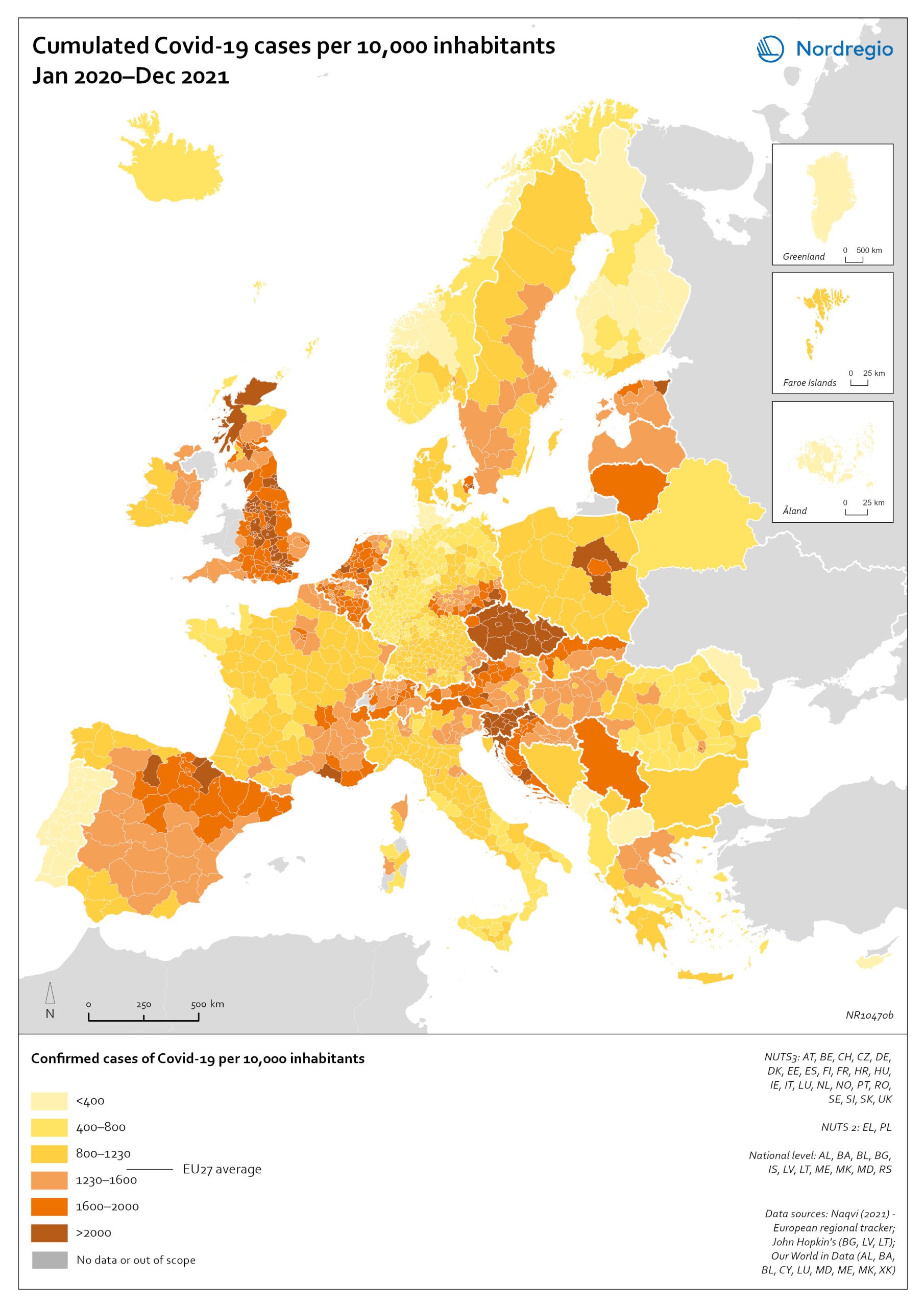Cross-border commuters to other Nordic countries for work 2015
The map builds on statistics of cross-border commuters with residence in a NUTS2 Nordic region commute for work in 2015. For each NUTS2 region, the map shows the total number of commuters who commute to other Nordic countries for work. The number of commuters is categorised into three groups visualised in different shades: the darker, the higher the number of commuters. In addition, the most common country these commuters commute to from each region is identified by specific colours. For example, the darkest red indicates a region with at least 2,000 commuters working in another Nordic country, of which the largest group number of commuters works in Denmark. The most commuters were from the region of South Sweden (16 543) in 2015, and the majority of them commuted to Denmark for work. Norway is the most popular destination for work commuters in the Nordic Region, e.g., all Swedish regions except for the South Sweden region, all the regions in Denmark except for the Copenhagen region, and Iceland. Sweden is more attractive for work commuters living in Finland, Copenhagen region, and bordering regions in Norway.




































